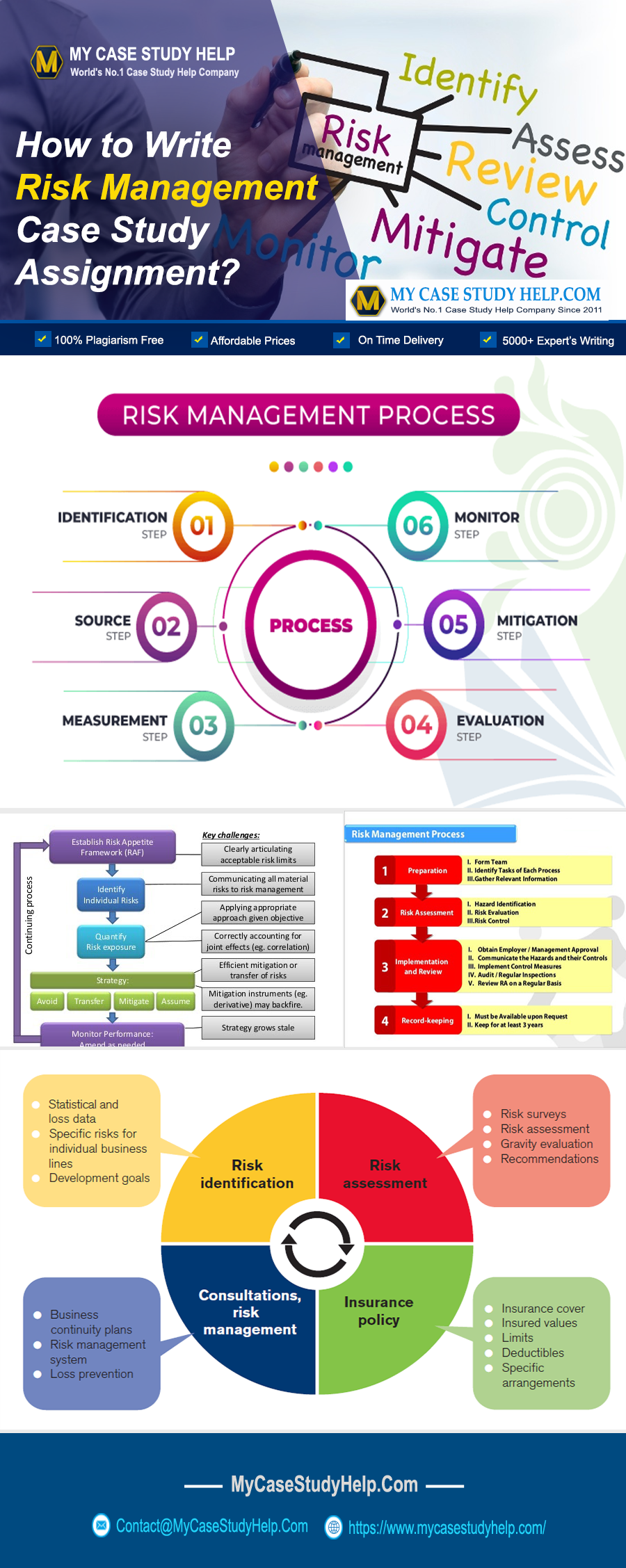The risk management course teaches students to take and manage risks in businesses. Risk Management Case Study Assignment has to be done with proper analysis. Risk management is defined as the process of identifying, evaluating, and prioritizing risks accompanied by the application of reducing unfortunate events enhancing growth opportunities. It is commonly considered a negative event, and handling this event in a way to convert them into positive events or opportunities is a skill that is rare to find. Risk management is an interesting course that has attracted numerous students previously. However, creating a Case Study assignment on risk management is an arduous task for students.
To make a compelling risk management assignment, students seek professional expert help. We at MyCaseStudyAssignment.Com provide you with complete assistance in risk management courses. We understand your concern and make your risk management assignment with utmost care. Our team of professionals always stands to support you in your needs.

An Overview on Risk Management Case Study Assignment
Risk is considered the most important part of any business operation, especially in the world of finance. It is a subject in business administration that involves the process of identifying, analyzing, and assessing the threats or risks and managing them in the organization’s capital and earnings for enhancing the profits with the subtle flow. Risk is that which concerns us the most. Once we start a business project and make an investment in financial ventures, our main concern is the risk of losing money. So, every management derives several risk measuring frameworks to counter the problems that we come across. Students pursuing an MBA are often asked to make projects/Assignments on some firm’s risk management model. Professional risk management assignment writers produce high-quality risk management Assignment Help.
Risk is always uncertain in businesses; keeping track of it is vital. It is the framework of actions that require to be taken for controlling the risk. It contains five steps that start from identifying to monitoring the risk. Let’s look at how the process is accomplished in the following steps:
1: Recognize risks and opportunities
2: Analyze and evaluate the risk
3: Number and prioritize the risk
4: Eliminate or include the risk
5: Review and monitor the risk
Such fives steps are mainly taken into consideration to control the risk in the business. After the final stage of monitoring, it is time to make improvements. Risk is a continuous process in business one goes, another comes. Therefore it must be controlled effectively.
Topics Come Under Risk Management
- Financial risk management
- Human resource risk management
- Production risk management
- Value and risk management
- Education risk management
- Enterprise risk management
- Managing risk and uncertainties of project risk management
- Entrepreneurial risk management
- Cyber risk management
- Property risk management
Advantages of Risk Management
Risk is an integral and inevitable part of the organization that makes value. Risk management influences the overall organization’s decision-making. It is effective when it is monitored and improved consistently. When a risk management process is applied effectively, then it can help the organization attain its goals. Some of the advantages of risk management are given below:
- It assists in making a safe and secure work environment for the staff member.
- Reduces unexpected events and provides protection to the enterprise.
- Enhances the chances of success by focusing on critical areas.
- Provides quality data and helps in better decision-making.
- Improves the operational efficiency that keeps the workforce engaged and customers happy.
- Recognizes the threats and trouble spots that enhance the stability of business operations and reduce legal liabilities.
- Helps in the company’s cost planning and implements a better plan.
- Efficient risk management reduces the cost and focuses on increasing the company’s income.
Consider taking the 4 T’s of Risk Management
Risk is unexpected, and there is no perfect way to control the risk, but surely there can be ways to resolve the uncertainties. There are always various options available for handling risk, but the best way is to follow 4 T’s of risk management:
- Tolerate: There is no requirement for doing anything but simply just accepting and monitoring it to retain for future decision making is necessary.
- Terminate: Sometimes, it is difficult to control risks so, you have to pause the activity that created the risk.
- Treat: Sometimes, the action needs to be taken on the most severe risk. The action must be according to the reduction of the profitability of the risk occurring and the gravity of consequences.
- Transfer: There are also some risks that should be transferred to the other party. These are judicial, contractual, and insurance risks.
